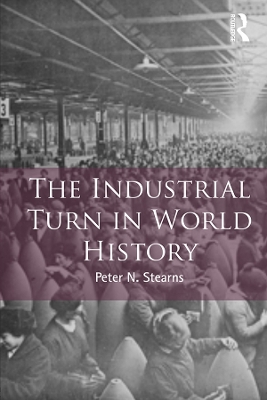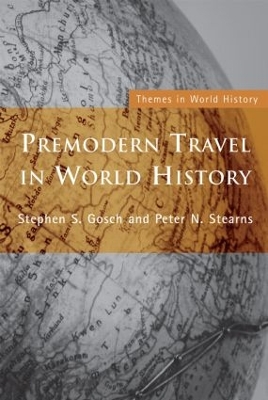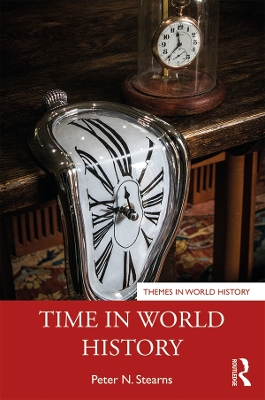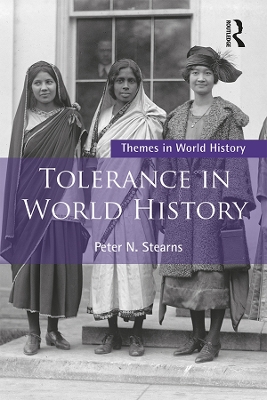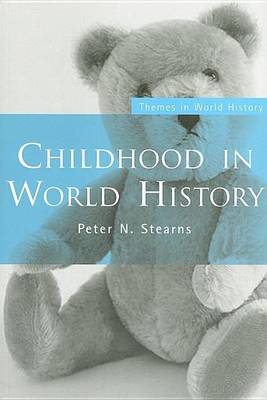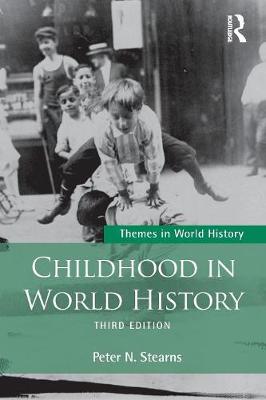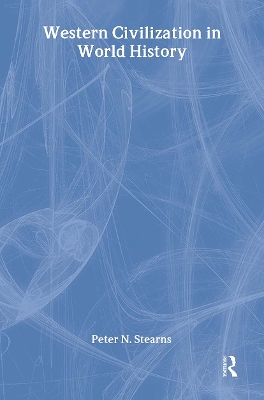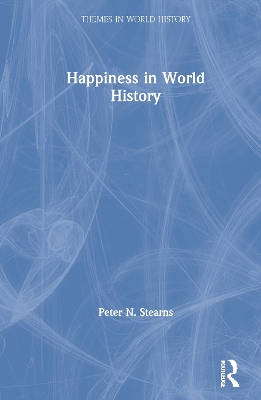Themes in World History
11 total works
In The Industrial Turn in World History, Peter N. Stearns presents a concise yet far reaching overview of the worldwide shift from agricultural societies to industrial societies over the past two centuries. Putting the implications for individuals and societies in global context while simultaneously considering the limits of generalization across cultures, Stearns's text explores the nature of industrialization across national and regional lines. Rather than portraying the Industrial Revolution as primarily a Western, early 19th-century development, this new narrative argues that the move to industrial societies is an ongoing and truly global shift. Taking a largely social and cultural approach, Stearns engages with the leading-edge approach of looking at emotion historically-allowing readers to ask questions about the impact of industrial society on emotional experience and happiness levels. This innovating framing allows for use in a variety of courses, including world history, economic history, and more general courses on the Industrial Revolution.
This book features some of the greatest travellers in human history – people who undertook long journeys to places they knew little or nothing about. From Roman tourists, to the establishment of the Silk Road; an epic trek round China and India in the seventh century, to Marco Polo and through to the first speculations on space travel, Premodern Travel in World History provides an overview of long-distance travel in Afro-Eurasia from around 400BCE to 1500.
This survey uses succinct accounts of the most epic journeys in the premodern world as lenses through which to examine the development of early travel, trade and cultural interchange between China, central Asia, India and southeast Asia, while also discussing themes such as the growth of empires and the spread of world religions.
Complete with maps, this concise and interesting study analyzes how travel pushed and shaped the boundaries of political, geographical and cultural frontiers.
In this book, Peter Stearns presents the fascinating concept of time through a global historical lens. Covering both calendrical time and clock time, the volume shows how significant changes in conceptions of time are in world history, as they translate many key historical developments from religion to industrialization, into daily experience.
The book explores why and how early societies became interested in measuring time, as well as explaining the causes and ongoing consequences of the modern sense of time. The author compares different societies and cultures in their attitudes and approaches to time and describes the role of globalization in its development. The volume offers many examples and illustrations to aid readers in their understanding of the advantages and disadvantages of various constructions of time, both in the past and among different groups of people today.
Time in World History will be of interest to students of world history and sociology, introducing readers to historical forces that continue to shape their lives quite directly.
From classical times to the twenty-first century, Gender in World History is a fascinating exploration of what happens to established ideas about men and women, and their roles, when different cultural systems come into contact. This book breaks new ground to facilitate a consistent approach to gender in a world history context.
This second edition has been completely updated, and now includes:
- expanded introductions to each chronological section
- extensive discussion of the twentieth century bringing it right up-to-date
- new chapters on international influences in the first half of the twentieth century and globilization in the latter part of the twentieth century
- engagement with the recent work done on gender history and theory.
With coverage right up to the present day, Gender in World History is essential reading for students of world history.
This volume draws together the many discrete studies of tolerance to create a global and comprehensive synthesis. In a concise text, author Peter Stearns makes connections across time periods and key regions, to help clarify the record and the relationship between current tolerance patterns and those of the past. The work is timely in light of the obvious tensions around tolerance in the world today - within the West, and without. A historical backdrop helps to clarify the contours of these tensions, and to promote greater understanding of the advantages and challenges of a tolerant approach.
Filling a gap in a field with very few teaching books available, Childhood in World History provides a much-needed historical overview. Studying childhood historically greatly advances our understanding of what childhood is about, and a world history focus permits broad questions to be asked.
Peter N. Stearns, an esteemed name in the field, focuses on childhood in several ways:
childhood across change - the shift from hunting and gathering to an agricultural society, the impact of civilization, and the emergence of major religionsnew and old debates about the distinctive features of Western childhood, including child labourthe emergence of a modern, industrial pattern of childhood in the West, Japan and communist societies, focusing on education and economic independenceglobalization and the spread of child-centred consumerism.Highlighting the gains, the divisions, and the losses for children across the millennia, this fascinating book will appeal to students across the board, and will prove an excellent teaching resource.
Taking a global look at what the category of childhood has meant from agricultural societies to the present day, Childhood in World History offers a vital overview of this topical field. Through comparative analysis, Peter Stearns facilitates a cross-cultural and transnational understanding of attitudes towards the role of children in society, and how "models" of childhood have developed throughout history. Engaging with issues around children's role in the family and the involvement of communal, national, educational, and global infrastructures, Stearns unpacks the experience of childhood in the West, Asia, Latin America, and Africa.
This expanded and updated third edition includes:
- updated bibliographies and suggested readings
-
- expanded discussions of religion and children's rights
-
- a new chapter on families in developing economies in the early twentieth century
-
- broadened discussions of childhood in Japan and in communist countries.
With expanded further reading lists, Stearns's accessible text not only provides an overview of its field but also offers a research guide for more specialized study. Concisely presented but broad in scope, Stearns's accessible text guides readers through the transformations of the concept of childhood.
Western civilization and world history are often seen as different, or even mutually exclusive, routes into historical studies. This volume shows that they can be successfully linked, providing a tool to see each subject in the context of the other, identifying influences and connections.
Western Civilization in World History takes up the recent debates about the merits of the well-established 'Western civ' approach versus the newer field of world history. Peter N. Stearns outlines key aspects of Western civilization - often assumed rather than analyzed - and reviews them in a global context.
Happiness in World History traces ideas and experiences of happiness from early stages in human history, to the maturation of agricultural societies and their religious and philosophical systems, to the changes and diversities in the approach to happiness in the modern societies that began to emerge in the 18th century.
In this thorough overview, Peter N. Stearns explores the interaction between psychological and historical findings about happiness, the relationship between ideas and popular experience, and the opportunity to use historical analysis to assess strengths and weaknesses of dominant contemporary notions of happiness. Starting with the advent of agriculture, the book assesses major transitions in history for patterns in happiness, including the impact of the great religions, the unprecedented Enlightenment interest in secular happiness and cheerfulness, and industrialization and imperialism. The final, contemporary section covers fascist and communist efforts to define alternatives to Western ideas of happiness, the increasing connections with consumerism, and growing global interests in defining and promoting well-being. Touching on the experiences in the major regions of Asia, Africa, Latin America, Europe, and North America, the text offers an expansive introduction to a new field of study.
This book will be of interest to students of world history and the history of emotions.
This book takes a global historical perspective to trace the rise of human rights and their global impact from the 18th century to the present.
This fully updated volume examines the complex relationships between Western concepts of human rights and developments in other world regions. After providing background on relevant premodern concepts and constraints, the book explores regional interactions with human rights; the disastrous impact of imperialism and racism; the recurrent expansion of the range of rights given to those including women and children and indigenous rights from the 19th century to the present. Major revisions for the second edition include:
• a new chapter focusing on recent historical and interdisciplinary debates
• a separate chapter on developments between the world wars
• greater attention to causation and an expanded treatment of some regions, including Africa
• an analysis of the mix of setbacks and rights expansion during the past fifteen years, within the global framework
Human Rights in World History is essential reading for students, scholars and researchers interested in modern history, human rights and political science.
